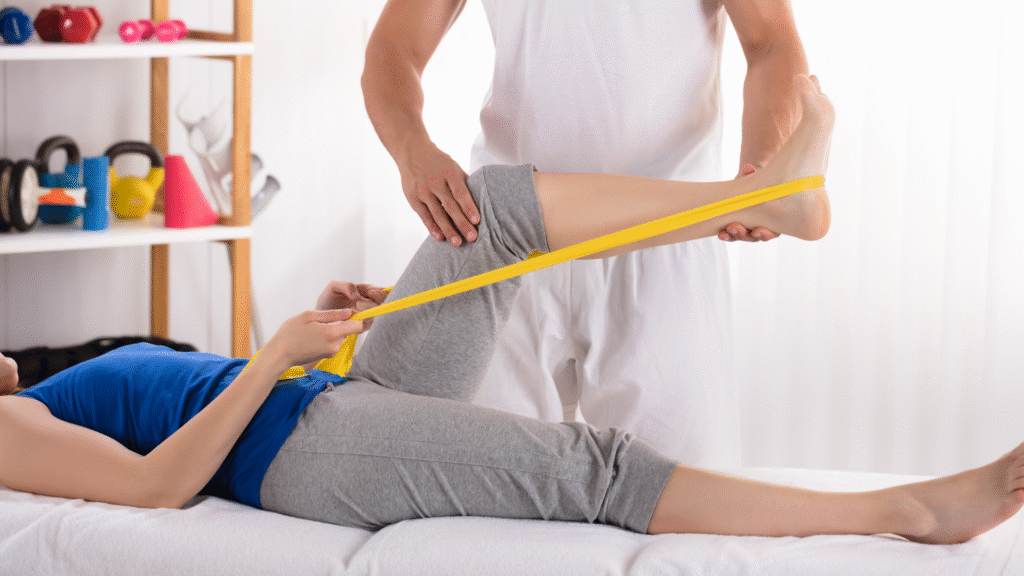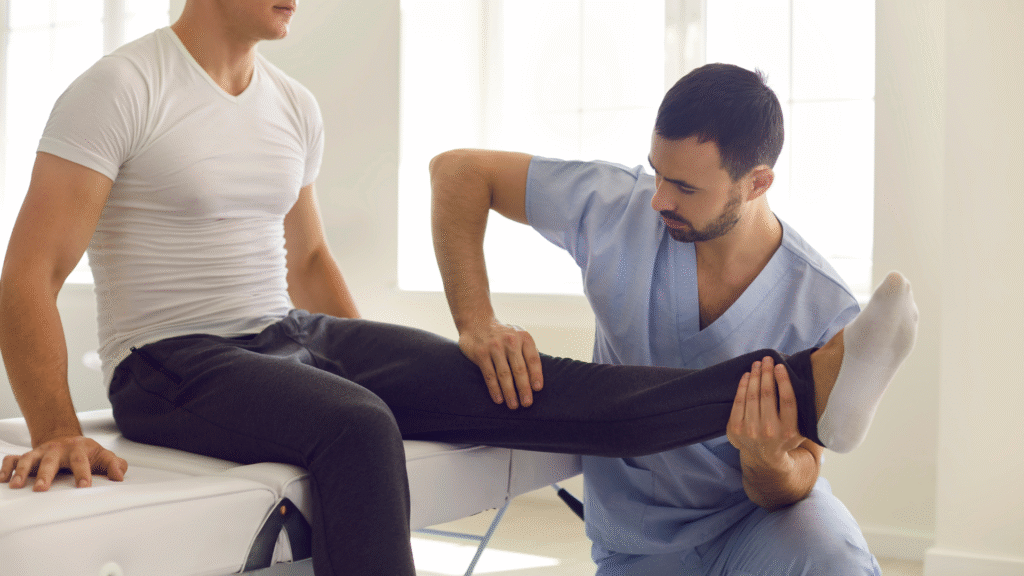-Levin Vinod, Sports Physiotherapist
That nagging ache in your knee. The stiffness that makes those first few steps in the morning a challenge. The worry that it might limit your ability to enjoy your favourite activities. If this sounds familiar, you might be experiencing the symptoms of knee osteoarthritis (OA), a common condition that affects millions worldwide.
At INSPIRE, we understand the impact knee pain can have on your life. We believe in a compassionate & effective approach to managing knee osteoarthritis, and physiotherapy plays a vital role in helping you find relief and regain your mobility.
What Exactly is Knee Osteoarthritis?
Think of the cartilage in your knee as a smooth, protective cushion between your bones. In osteoarthritis, this cartilage gradually wears down over time. This can lead to:
- Pain: Often described as a deep ache that worsens with activity and improves with rest.
- Stiffness: Especially noticeable in the morning or after periods of inactivity.
- Swelling: Fluid buildup around the joint.
- Reduced Range of Motion: Difficulty bending or straightening your knee fully.
- Grating or Clicking Sensations: As the bones rub against each other.
It’s important to remember that while OA is a progressive condition, it doesn’t mean you have to live with constant pain and limitations.
Why Does Knee Osteoarthritis Happen?
While the exact cause isn’t always clear, several factors can increase your risk of developing knee OA, including:
- Age: The risk increases as we get older.
- Genetics: A family history of OA can make you more susceptible.
- Weight: Excess weight puts extra stress on your knee joints.
- Previous Knee Injuries: Ligament tears or meniscus injuries can increase the likelihood of developing OA later in life.
- Repetitive Stress: Certain occupations or activities that involve repetitive knee movements can contribute.
How Physiotherapy Can Be Your Ally in Managing Knee Osteoarthritis

At INSPIRE Physiotherapy and Sports Rehabilitation, our experienced physiotherapists take a holistic and personalized approach to managing your knee osteoarthritis.
We understand that every individual’s experience is unique, and our treatment plans are tailored to your specific needs and goals. Here’s how physiotherapy can help:
- Pain Management: We utilize various techniques, including manual therapy, therapeutic exercises, and other modalities to help reduce pain and discomfort.
- Improving Strength and Stability: Strengthening the muscles around your knee, such as the quadriceps, hamstrings, and calf muscles, provides better support and stability to the joint, reducing stress and pain.
- Restoring Range of Motion and Flexibility: We’ll guide you through specific exercises to improve the flexibility and range of motion in your knee, making everyday activities easier.
- Enhancing Balance and Proprioception: Exercises that challenge your balance and awareness of your body’s position can help prevent falls and improve overall knee function.
- Education and Self-Management Strategies: We empower you with the knowledge and tools to manage your condition effectively in the long term.
- Promoting Function and Independence: Our ultimate goal is to help you return to the activities you enjoy and maintain your independence. We’ll work with you to develop a plan that helps you achieve your functional goals.
When you come to INSPIRE, you can expect:
- A Thorough Assessment: Our physiotherapist will conduct a detailed evaluation of your knee, including your medical history, pain levels, range of motion, strength, and functional limitations.
- A Personalized Treatment Plan: Based on your assessment, we will develop a tailored treatment plan that addresses your specific needs and goals.
- Hands-on Care and Guidance: You’ll receive expert hands-on therapy and clear instructions on exercises you can perform at home.
- Ongoing Support and Monitoring: We’ll track your progress and adjust your treatment plan as needed to ensure you’re achieving the best possible outcomes.

Disclaimer- This blog post is for informational purposes only and does not constitute medical advice. Please consult with a qualified healthcare professional for diagnosis & treatment.
References:
- Dantas, Lucas Ogura, Tania de Fátima Salvini, and Timothy E. McAlindon. “Knee osteoarthritis: key treatments and implications for physical therapy.” Brazilian journal of physical therapy 25.2 (2021): 135-146.
- van Doormaal, Mitchell CM, et al. “A clinical practice guideline for physical therapy in patients with hip or knee osteoarthritis.” Musculoskeletal care 18.4 (2020): 575-595.
- Berteau, Jean-Philippe. “Knee pain from osteoarthritis: pathogenesis, risk factors, and recent evidence on physical therapy interventions.” Journal of Clinical Medicine 11.12 (2022): 3252.
- Kloek, Corelien JJ, et al. “Effectiveness of a blended physical therapist intervention in people with hip osteoarthritis, knee osteoarthritis, or both: a cluster-randomized controlled trial.” Physical therapy 98.7 (2018): 560-570.
- Sharma, Leena. “Osteoarthritis of the knee.” New England Journal of Medicine 384.1 (2021): 51-59.
- Roos, Ewa M., and Nigel K. Arden. “Strategies for the prevention of knee osteoarthritis.” Nature Reviews Rheumatology 12.2 (2016): 92-101.

